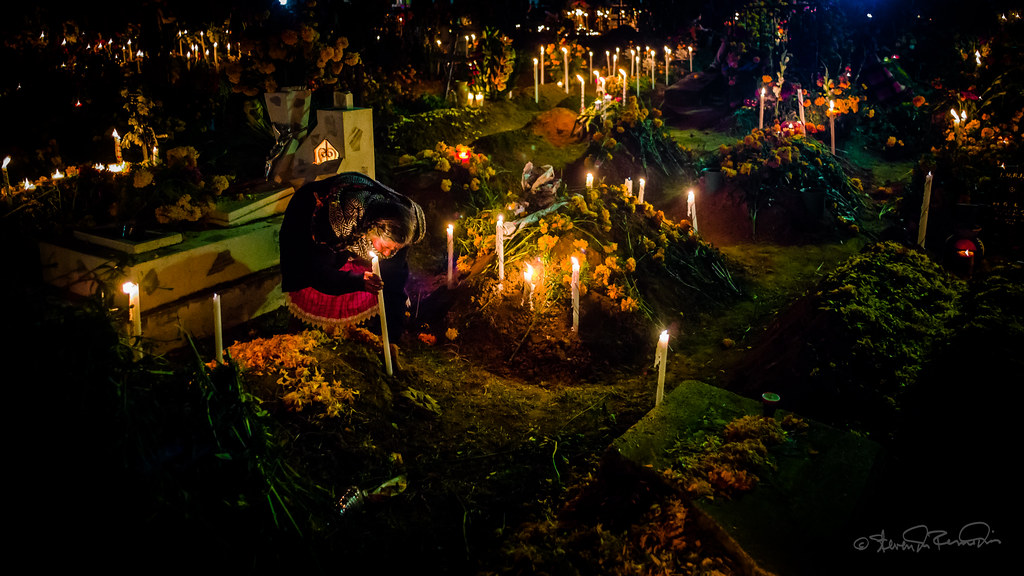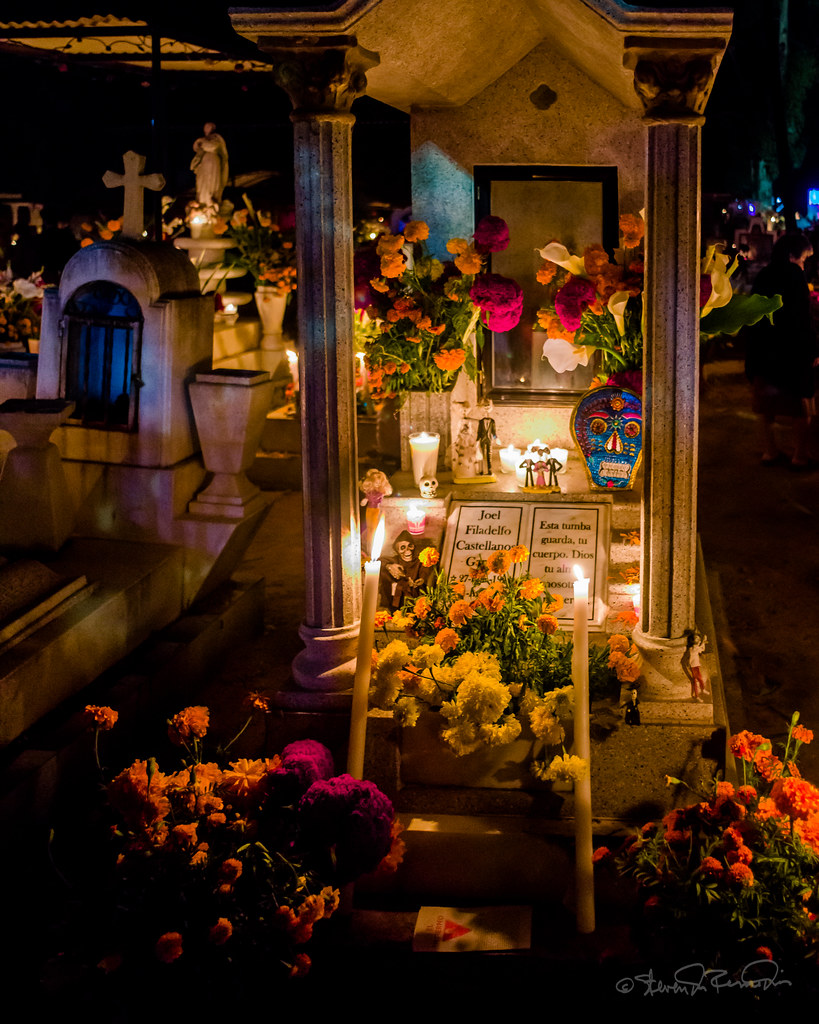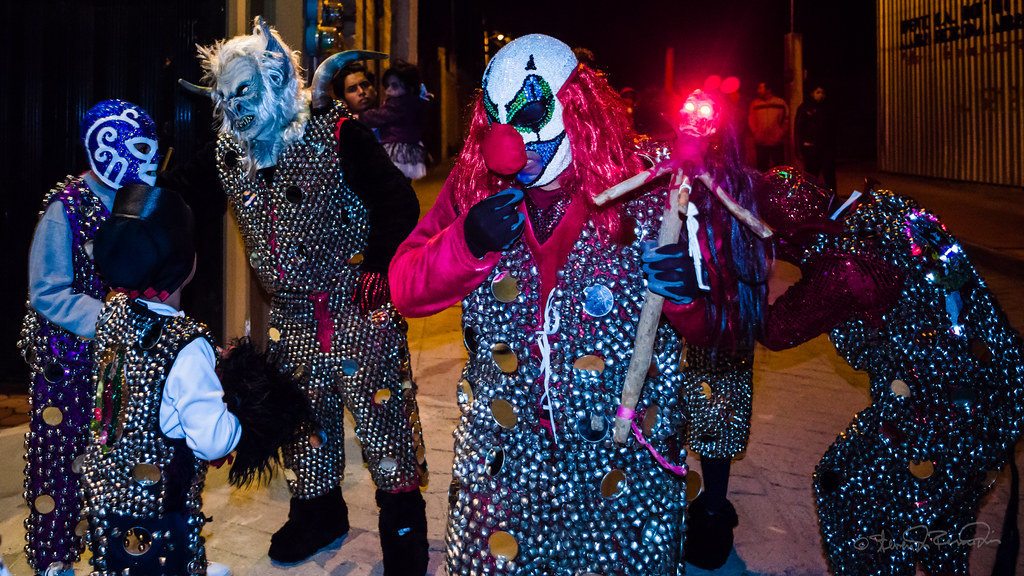
There is a long standing tradition in Mexico and elsewhere that celebrates Christian events in ways rooted in indigenous rites. Dia de los Muertos, or Day of the Dead, is a beautiful example of an assimilated festival. This image is from a simple cemetery near Oaxaca, Mexico.
Drawing on early European traditions from the middle ages, the Dance Macabre, and later of All Hallow's Eve, All Saints' Day and All Souls' Day, Dia de los Muertos evolved into a secular activity. Honoring the dead with elaborate skulls (calaveras,) tableaus (offrendas,) and celebrations of the living (comparsas.)

October 31st is the evening to communicate with those who have passed, keeping their memory alive. Cemeteries are bustling with families assembling at the grave sites of relatives. Photos and mementos are placed around the graves and the entire scene is illuminated with candles. Some cemeteries are very elaborate and some are simple; no matter, the celebration is the same.

November 1st some villages celebrate with comparsas, a group of musicians and dancers who perform in the street. Participants dress in elaborate costumes; some parody politicians, some look scary, some are covered in mirrors and bells to ward off evil spirits; and there are meandering street bands. There is much drinking during this massive street party.

